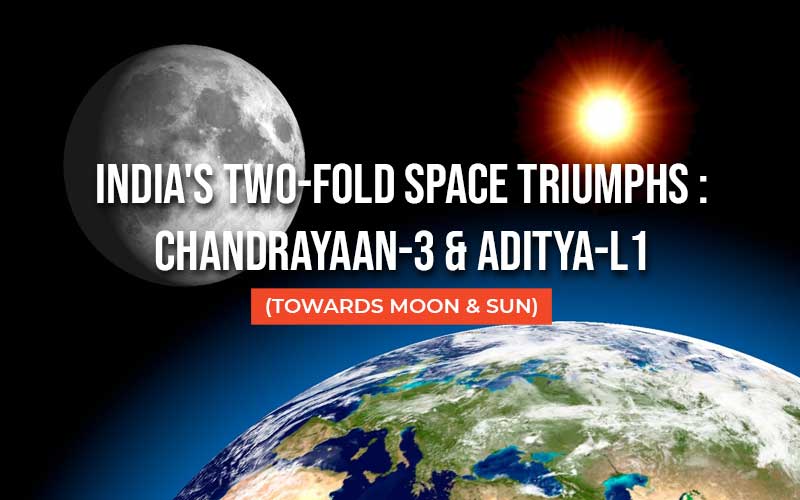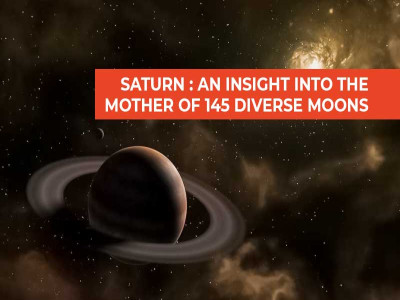
India's Two-fold Space Triumphs: Chandrayaan-3 and Aditya-L1
Space exploration is a frontier that knows
no boundaries, and the success of one country's mission benefits us all. India,
with its unique approach and determination, has carved a special place for
itself in the global space community. In this blog, we will delve into two
remarkable missions that have placed India on the map of space exploration:
Chandrayaan 3 and Aditya L1.
Chandrayaan 3: Lunar Mission
In the past, only three countries - America, Russia, and China - had successfully soft-landed on the moon's surface. However, India's Chandrayaan 3 mission changed the game forever. After a 39-day journey through the cosmos, India achieved what no one else had before: a soft landing on the lunar south pole. This was not only a moment of immense pride for all Indians but also a testament to India's cost-effective approach to space exploration. Chandrayaan 3 will actively operate on the moon's surface for 14 days. Its success will undoubtedly pave the way for future South Pole missions and expand our understanding of the moon's mysteries.
Vikram Lander's Impressive Payload:
The heart of the Chandrayaan 3 mission lies in the Vikram Lander, which carries a Pragyan Rover and three crucial instruments. These instruments, namely ChaSTE, ILSA, and LP, are designed to measure lunar surface temperature, seismic activity, and plasma density on the moon, respectively. The Pragyan Rover, equipped with APXS and LIBS instruments, is tasked with analyzing the chemical composition of the moon's surface.
Uncovering Lunar Secrets:
Chandrayaan 3 has already made significant discoveries, including the detection of lunar tremors and natural seismic activity. These findings are currently under intensive study, promising to unlock mysteries of the moon's geology and structure.
Not to be outdone, the Ramba lander has been diligently exploring the moon's ionosphere. One of its key findings reveals that the plasma sphere near the lunar surface is relatively sparse. This valuable data could aid in understanding lunar atmospheric conditions better.
Affordability and Repetition:
One of India's hallmarks in space exploration is affordability. The Chandrayaan 3 mission, with a budget of Rs. 615 crore, demonstrates that high-quality missions can be achieved with cost-conscious planning. This affordability opens the door for future lunar experiments, enabling India to revisit the moon's surface and build upon its discoveries.
Aditya L1 Conquest: A Solar Pioneer
Just a week after the successful launch of Chandrayaan 3, India made another leap in space exploration with the Aditya L1 mission. Aditya L1, named after the sun (Aditya) and L1 (one of the Lagrange points), is the first solar explorer, which has been launched from Sriharikota, Andhra Pradesh.
Understanding Lagrange (L) points:
Since landing on the sun is impossible, Aditya L1's journey begins from one of the five Lagrange points (L points), specifically L1. L points are special locations that are crucial for space exploration missions as they result from the gravitational balance between Earth and the sun. Aditya L1 is destined for the L1 point, which is 1.5 million kilometres away from the sun, four times the distance to the moon. At L1, gravitational forces between Earth and the sun cancel each other out, allowing spacecraft to maintain a stable orbit. This unique position also allows Aditya L1 to monitor solar activity from a front-row seat while conserving fuel.
Aditya L1's Multifaceted Payload:
Aditya L1 boasts seven payloads, with four dedicated to monitoring the sun and three to observing the L1 point. This comprehensive approach will shed light on the sun's outermost layer, the Corona, and its impact on space weather, including solar storms.
Mission Details:
The Aditya L1 mission, with an estimated cost of 400 crores including the landing, represents India's commitment to unravelling the mysteries of our closest star. It will take four months to reach the L1 point and will remain active for an impressive five years, continuously feeding us critical data about the sun.
All in all,
India's space ambitions, demonstrated by Chandrayaan 3 and Aditya L1, exemplify the country's passionate commitment to exploring the universe. As we gaze into the skies and beyond, these missions remind us of the vast opportunities that lie in the exploration of celestial bodies and the promise of self-reliance in space endeavours. These missions not only add to our understanding of the moon and the sun but also show that cost-effective, high-quality space exploration is possible. The project proves India's ability to conduct space exploration at a low cost, paving the way for future celestial experimentation.
As India enters the club of self-reliance in space exploration, we look forward to the disclosures that these expeditions will definitely bring, enhancing our knowledge for the greater benefit of the world as a whole. The sun, the primary source of energy, and the mysteries of our universe await, and India has firmly joined the club of nations on this cosmic journey.
Disclaimer: The opinions expressed in this article are those of the author's. They do not purport to reflect the opinions or views of The Critical Script or its editor.

Newsletter!!!
Subscribe to our weekly Newsletter and stay tuned.

















Related Comments